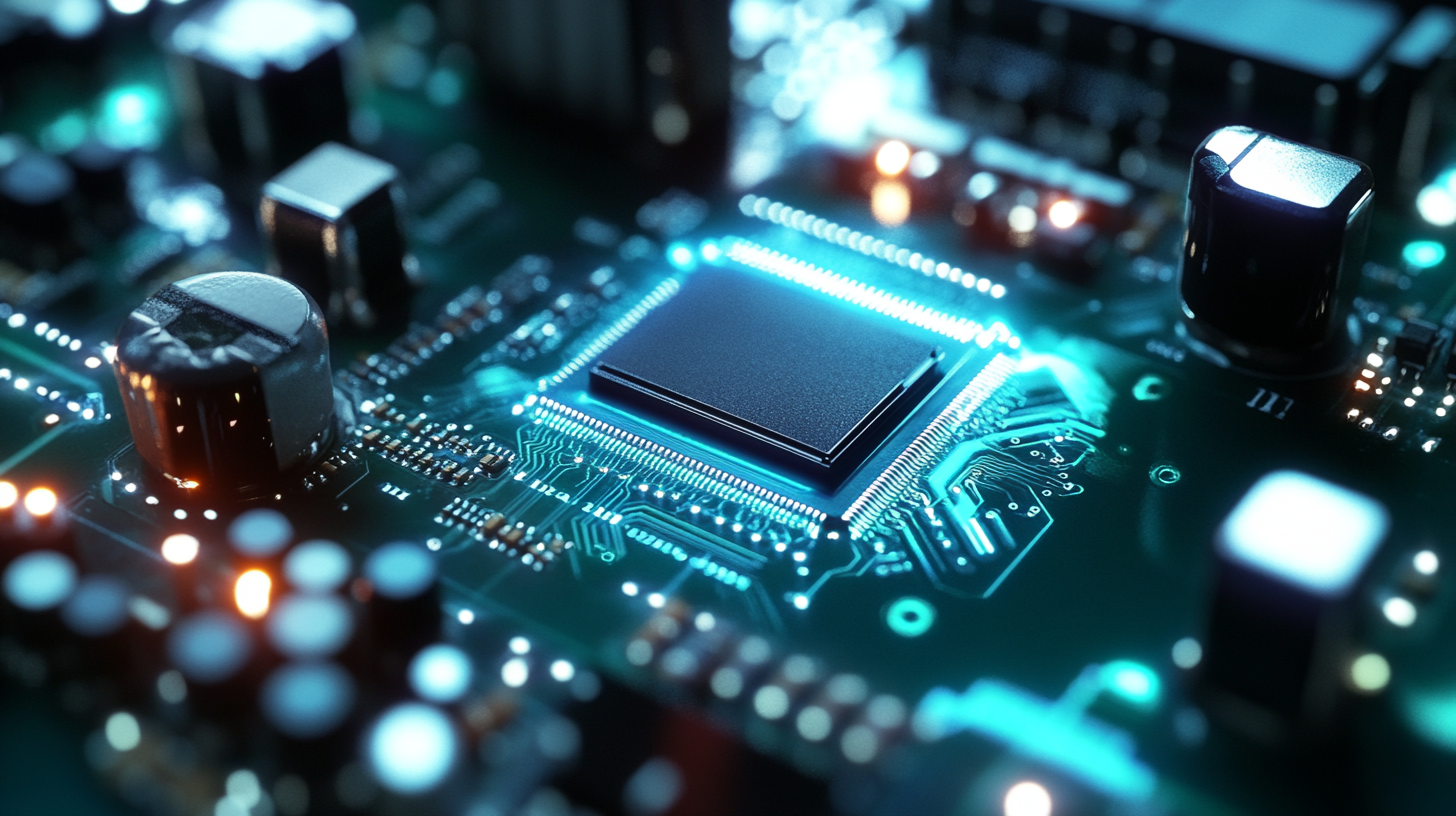

As we look towards 2025, the landscape of global procurement for Pcb Printed Circuit Boards (PCBs) is undergoing significant transformation driven by technological advancements and shifting market demands. According to a recent report by MarketsandMarkets, the global PCB market is projected to reach $90.4 billion by 2025, growing at a CAGR of 4.2% from 2020. This growth is fueled by the rising demand for PCBs in various sectors, including automotive, telecommunications, and consumer electronics. As companies increasingly seek high-quality manufacturing partners, understanding how to select the right Pcb Printed Circuit Board for their specific applications becomes critical. In this blog, we will explore key industry trends, challenges, and best practices, emphasizing China's capabilities as a trusted partner in delivering superior PCB solutions to meet global procurement needs.

The global PCB (Printed Circuit Board) market is poised for significant growth heading into 2025, driven by advancements in technology and increasing demand across various sectors. Key statistics indicate that the low-fiber glass content market is projected to reach $2.213 billion by 2024, signaling strong potential for the electronics and telecommunication industries. Furthermore, the market is expected to expand even further, foreseeing a staggering annual compound growth rate of 25.6% through 2033, reflecting a robust investment environment and the critical role PCBs play in electronic manufacturing.
As companies look to optimize their procurement strategies, understanding the dynamics of the global PCB market becomes essential. Factors such as economic recovery, policy support, and technological innovations are likely to reverse previous downturns in the electronics sector. With a projected 1.8% increase in global television market shipments in 2024, businesses must recognize the interconnectedness of PCB supply chains and the broader consumer electronics landscape. By leveraging these insights, organizations can make informed decisions to capitalize on emerging trends and sustain competitive advantage in the rapidly evolving marketplace.
As the global procurement landscape evolves, the role of Chinese manufacturers in the PCB supply chain becomes increasingly significant. China has established itself as the world’s manufacturing superpower, dominating various sectors including electronics. This dominance stems from its extensive production capabilities and the efficiency of its supply chain, which allow for rapid scaling and adaptation to market demands. With the ongoing geopolitical tensions and the push for supply chain diversification, understanding China's pivotal position is crucial for companies looking to source high-quality PCBs.
Innovation also plays a vital role in the ongoing evolution of the PCB market. Chinese manufacturers are not only leaders in volume production but are also focusing on technological advancements to enhance their competitiveness. As the market shifts towards high-tech applications, such as automotive and aerospace electronics, manufacturers like those in China are investing heavily in research and development to create more sophisticated, efficient, and reliable products. This trend indicates that businesses seeking to procure printed circuit boards must not only consider cost and availability but also the innovative capabilities of their suppliers to ensure they remain at the forefront of technological advancements.
When selecting the best Printed Circuit Boards (PCBs) for global procurement, evaluating the material types is crucial, particularly in terms of performance, cost, and environmental impact. According to a recent industry report by IPC, the choice of PCB material can influence not just the functionality and durability of the electronic devices but also the total lifecycle cost by up to 20%. Common materials such as FR-4 and Rogers 5880 each offer distinct advantages; for example, FR-4 is cost-effective and widely available, making it a favorable option for low to mid-range applications, while Rogers 5880 provides superior thermal management, ideal for high-frequency applications.
Tips: When evaluating materials, consider not only the initial costs but also the performance requirements of your application. For high-temperature or high-frequency environments, investing in premium materials can result in longer-lasting products, reducing future procurement cycles.
Furthermore, the environmental impact of the materials used in PCB manufacturing is increasingly becoming a focal point. With the rise of the circular economy, reports suggest that adopting eco-friendly materials, such as biodegradable resins or recycled substrates, can significantly reduce waste. In fact, a study from the International Journal of Environmental Impact revealed that eco-friendly PCBs could reduce a company's carbon footprint by up to 35%.
Tips: Always request Environmental Product Declarations (EPDs) from suppliers when assessing PCB materials, as these documents provide valuable insights into the environmental performance of different options.

Emerging technologies in PCB design are reshaping the landscape of the electronics industry, driving new levels of innovation and efficiency. One significant trend is the integration of IoT (Internet of Things) capabilities into PCB design. This integration enables the development of smart devices that can communicate and process data in real-time, enhancing their functionality and market appeal. As manufacturers adopt IoT-centric designs, they also benefit from reduced production times and improved end-user experiences.

Another notable trend is the increasing adoption of flexible and printed electronics. These technologies allow for the creation of lightweight, adaptable circuits that can be utilized in a wide range of applications, from wearable technology to automotive designs. As demand for space-saving solutions grows, flexibility in design becomes paramount. This shift not only broadens the scope of applications but also challenges traditional design methodologies, compelling engineers to rethink how PCBs are conceptualized and manufactured. The industry is evolving quickly, and staying abreast of these trends will empower companies to make informed decisions in their procurement strategies.
In the rapidly evolving landscape of PCB (Printed Circuit Board) manufacturing, global procurement requires a strategic emphasis on quality, compliance, and supplier selection. As industries increasingly prioritize sustainability and risk management, understanding the complete supply chain—from supplier selection to delivery—becomes crucial. A recent study highlighted the importance of thorough risk and hazard analysis across various production units, which can be directly applied to PCB procurement. Ensuring that suppliers adhere to advanced risk management methodologies not only boosts product reliability but also aligns with the best practices outlined in industry standards.
Tips: When selecting PCB suppliers, consider conducting a comprehensive audit of their compliance with international standards. Utilize advanced risk assessment tools to identify potential vulnerabilities in their processes. Additionally, fostering open communication with suppliers can enhance transparency and trust, ensuring a smooth procurement process.
Moreover, it’s imperative to focus on quality benchmarks. Reports indicate that industries witnessing subpar PCB quality often face supply chain disruptions. Engaging with suppliers that demonstrate a proactive approach to quality control can mitigate such risks. Regularly reviewing supplier performance metrics and implementing corrective actions will strengthen the overall procurement strategy.
Tips: Establish clear quality metrics and conduct periodic assessments to monitor supplier performance. Building collaborative relationships can lead to innovative solutions that further enhance product quality and compliance.